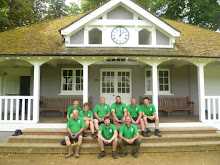The euphoria that surrounded the long awaited arrival of cygnets on the college lake has been short lived. Seven cygnets were first seen last weekend, 20th -21st, but their numbers quickly reduced to just four by Thursday the 25th. These four looked healthy and were growing quickly but, alas, the whole family have now disappeared from the lake, where to is unknown.
This year has been a bad year for the waterfowl that live and breed on the lake following the removal of the reed bed during dredging. The loss of this protective habitat used by many species as a nursery and safe area to raise their young, appears to have had a dramatic effect on their nesting, breeding and the successful rearing of their young.
For the last five years the swans have built their nest in the reeds but now had to make their nest on the island. The island belongs to the Canada geese pair who, for the last two years, have successfully hatched their eggs and reared their goslings from this safe area, but, as the swans moved in it put them in direct competition. The male swan, the cob, protected his female, the pen, as she incubated their eggs by chasing off the pair of geese, destroying their nest and the clutch of eggs, refusing to let them back to their nest for three weeks. (Video clip below shows the male swan chasing the geese and sitting on their nest, the 3 goose eggs can be seen laying on the edge of the island). Although the geese did manage to get back on their nest it was too late for the remaining eggs.
The Moorhen also relied heavily on the protection of the reeds, building their nests amongst the many stems with successful hatching and raising of their young over the last few years, no nests were made on the lake this year and the adults have left.
The reed warbler have also not been seen or heard this year, (nesting reed warblers could eventually mean cuckoo at Worcester who love to lay their egg in the host's nest).
It is hoped that the reeds will grow back over the next few years and the safe habitat returned.
 |
| April 2016 Swans In The Reed Bed |
 |
| The Empty Reed Bed 2017 |





















































